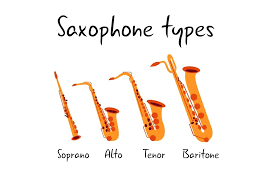The Saxophone: A Musical Marvel
The saxophone is a captivating and versatile musical instrument that has found its way into various genres of music, from classical to jazz, and even rock and pop. With its distinctive shape and soulful sound, the saxophone has earned a special place in the hearts of musicians and music lovers alike. In this article, we’ll explore the history, types, playing techniques, and the enduring appeal of this extraordinary instrument.
A Brief History of the Saxophone
The saxophone was invented in the early 1840s by Adolphe Sax, a Belgian instrument maker and musician. Adolphe Sax designed the saxophone with the intention of creating an instrument that bridged the gap between woodwind and brass instruments. The saxophone’s unique design, featuring a conical brass body and a single-reed mouthpiece, set it apart from other instruments of its time.
The saxophone gained popularity in military bands in Europe during the 19th century due to its powerful and expressive sound. Over time, it found its way into various musical settings and genres, eventually becoming a staple in jazz, classical, and contemporary music.
Types of Saxophones
There are several types of saxophones, each with its own distinctive range and sound. The most common types include:
- Soprano Saxophone: The highest-pitched saxophone, known for its bright and piercing sound.
- Alto Saxophone: A medium-sized saxophone with a rich and mellow tone, often used in jazz and popular music.
- Tenor Saxophone: Slightly larger than the alto sax, it has a warm and expressive sound, frequently heard in jazz and rock music.
- Baritone Saxophone: The largest saxophone, known for its deep and powerful sound, often used in big bands and classical compositions.
- Sopranino Saxophone: Smaller than the soprano sax, it has a high-pitched and lively tone.
Each type of saxophone has its own unique character, allowing musicians to choose the one that best suits their musical style and preferences.
Playing the Saxophone
Playing the saxophone requires both technical skill and artistic expression. Musicians use a combination of fingerings and embouchure (lip and mouth control) to produce a wide range of notes and tones. Some essential saxophone playing techniques include:
- Breathing Control: Proper breath support is crucial for producing a consistent tone and sustaining long phrases.
- Articulation: The way a saxophonist tongue the reed can create various articulations, such as staccato or legato.
- Vibrato: By modulating the pitch slightly, saxophonists can add expressiveness to their playing.
- Altissimo Register: Advanced players can access the altissimo register, producing high and piercing notes.
The Saxophone’s Enduring Appeal
The saxophone’s unique blend of expressive power and versatility has made it a beloved instrument in many musical genres. Its ability to convey deep emotions, from the melancholic strains of a ballad to the exuberance of a jazz improvisation, has endeared it to both performers and audiences.
Saxophonists like Charlie Parker, John Coltrane, and Kenny G have left an indelible mark on the world of music, showcasing the instrument’s incredible potential for innovation and self-expression.
In conclusion, the saxophone is more than just an instrument; it’s a musical marvel that has enriched our lives with its beautiful melodies and dynamic performances. Whether you’re a budding musician or a devoted music enthusiast, the saxophone’s allure is undeniable, and its legacy continues to grow with each new generation of players. So, the next time you hear the soulful strains of a saxophone, take a moment to appreciate the history, artistry, and passion that this extraordinary instrument embodies.




